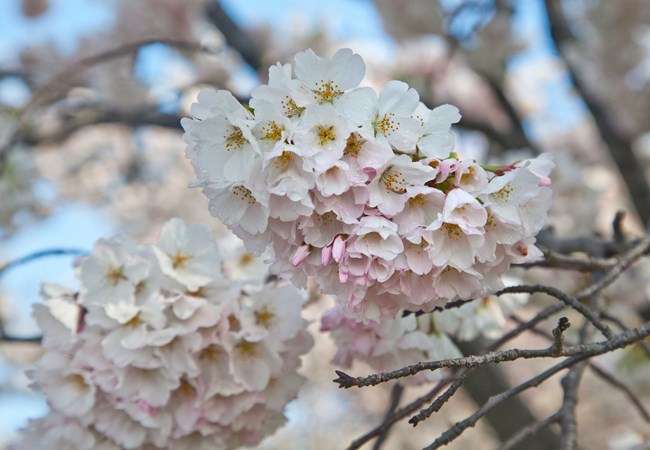
NPS Photo
The tradition of celebrating the blooming of cherry trees in Japan is centuries old.
The planting of cherry trees in Washington DC originated in 1912 as a gift of friendship to the People of the United States from the People of Japan.
In Japan, the flowering cherry tree, or "Sakura," is an important flowering plant. The beauty of the cherry blossom is a symbol with rich meaning in Japanese culture.
For more than a hundred years, we have celebrating cherry trees blooming in solidarity.
The Spirit of Cooperation & a Gift of Blooming Trees
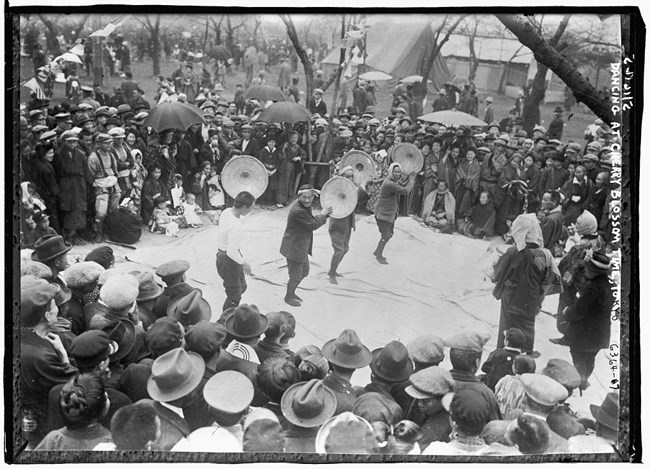
Library of Congress
The tradition of celebrating the spring blooming of cherry trees in Japan is centuries old.
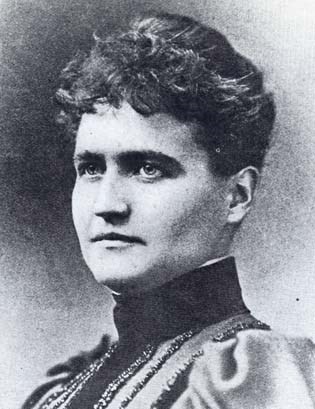
Courtesy Washingtoniana Division, D.C. Public Library
1885: Mrs. Eliza Ruhamah Scidmore was a world traveler, writer, and diplomat at a time when social norms kept many women at home.
Upon returning to Washington from her first visit to Japan, Eliza approached the U.S. Army Superintendent of the Office of Public Buildings and Grounds with a proposal that Japanese cherry trees be planted one day along the reclaimed Potomac waterfront. Her request fell on deaf ears.
Over the next twenty-four years, Mrs. Scidmore approached every new superintendent to propose the idea of Japanese cherry trees in Washington DC.
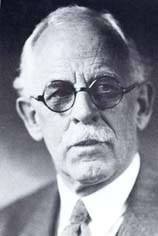
Courtesy U.S. National Arboretum
1906: Dr. David Fairchild, plant explorer and U.S. Department of Agriculture official, imported seventy-five flowering cherry trees and twenty-five single-flowered weeping types from the Yokohama Nursery Company in Japan.
He was planning to test the ability of cherry trees to thrive in the environment near Washington DC. Dr. Fairchild planted these trees on a hillside on his own property in Chevy Chase, Maryland. He observed the trees growing. One year later, the experiment was deemed a success!
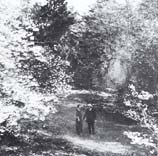
Courtesy of the Fairchild Tropical Garden
1907: The Fairchilds, pleased with the success of the trees, began to promote Japanese flowering cherry trees as the ideal type of tree to plant along avenues in the Washington area. Friends of the Fairchilds also became interested and on September 26, arrangements were completed with the Chevy Chase Land Company to order three hundred cherry trees for the Chevy Chase area.
1908: Dr. David Fairchild gave cherry saplings to children from each District of Columbia school to plant in their schoolyard for the observance of Arbor Day. In closing his Arbor Day lecture, Dr. Fairchild expressed an appeal that the "Speedway" (no longer existing, but marked by portions of Independence and Maine Avenues, SW and East and West Basin Drives, SW, around the Tidal Basin) be transformed into a "Field of Cherries." Eliza Scidmore was in attendance, seeing the first big results of her advocacy.
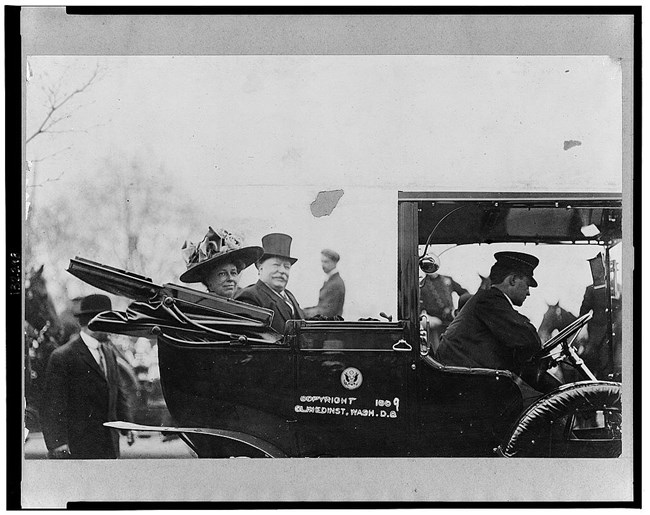
Library of Congress, Clinedinst, Barnett McFee
1909: Eliza Scidmore decided to try to raise the money required to purchase the cherry trees and then donate them to the city. She sent a note outlining her plan to the new First Lady, Helen Herron Taft.
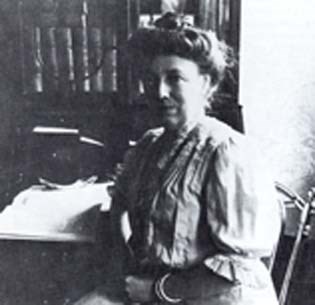
Courtesy U.S. National Arboretum
1909: Mrs. Taft had lived in Japan and was familiar with the beauty of the flowering cherry trees. Two days later the first lady responded.
The White House, Washington
April 7, 1909
Thank you very much for your suggestion about the cherry trees. I have taken the matter up and am promised the trees, but I thought perhaps it would be best to make an avenue of them, extending down to the turn in the road, as the other part is still too rough to do any planting. Of course, they could not reflect in the water, but the effect would be very lovely of the long avenue. Let me know what you think about this.
Sincerely yours,
Helen H. Taft
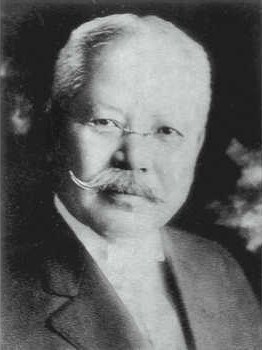
Government of Japan, "The Cherry Blossoms Blooming Friendship Between Japan and the United States"
April 8, 1909: The day after Mrs. Taft's letter of April 7, Dr. Jokichi Takamine, the Japanese chemist who discovered adrenaline and takadiastase, was in Washington with Mr. Midzuno, Japanese consul in New York.
When he was told that Washington was to have Japanese cherry trees planted along the Speedway, he asked whether Mrs. Taft would accept a donation of an additional two thousand trees to fill out the area. Mr. Midzuno thought it was a fine idea and suggested that the trees be given in the name of the City of Tokyo.
Dr. Takamine asked the Mayor of Tokyo, Yukio Ozaki, to support making a gift of cherry trees to the United States.
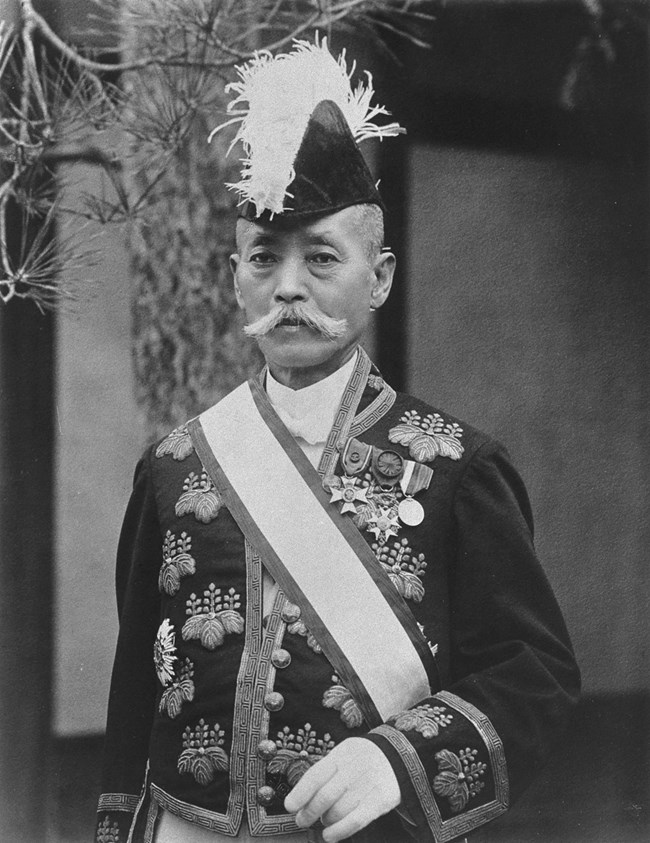
Kinsei Meishi Shashin vol.2, National Diet Library, Japan
1909: Tokyo's Mayor, Yukio Ozaki, supported the gift of cherry trees to Washington DC.
First Lady of the United States, Helen Herron Taft, agreed to accept a donation of 2,000 cherry trees.
The first cherry trees were on their way!
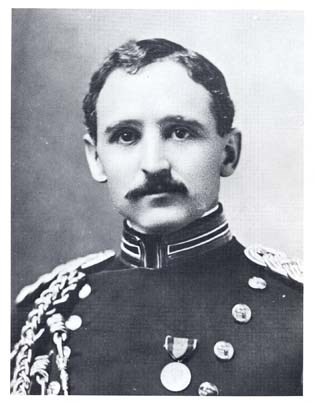
Courtesy U.S. National Arboretum
April 13, 1909: Five days after Mrs. Taft's request, the Superintendent of the Office of Public Buildings and Grounds, Colonel Spencer Cosby, U.S. Army, initiated the purchase of ninety Fugenzo Cherry Trees (Prunus serrulata "Fugenzo") from Hoopes Brothers and Thomas Co., West Chester, PA.
The trees were planted along the Potomac River from the site of the Lincoln Memorial southward toward East Potomac Park. After planting, it was discovered that the trees were not named correctly. The trees were determined to be the cultivar Shirofugen (Prunus serrulata "Shirofugen") and have since disappeared.
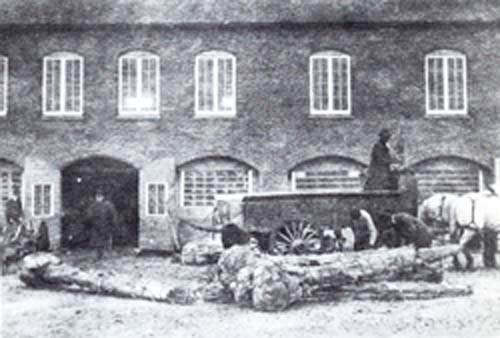
Courtesy of U.S. National Arboretum
August 30, 1909: The Japanese Embassy informed the Department of State that the City of Tokyo intended to donate to the United States two thousand cherry trees to be planted along the Potomac River.
December 10, 1909: Two thousand cherry trees arrived in Seattle, Washington from Japan.
January 6, 1910: The two thousand trees arrived in Washington, D.C.
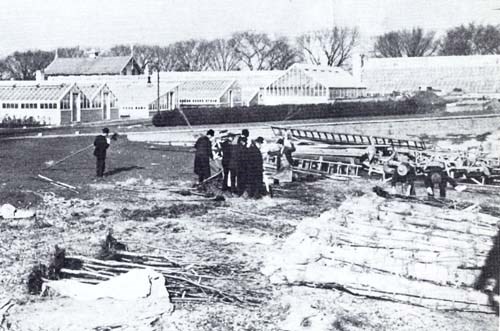
Courtesy of U.S. National Arboretum
January 19, 1910: To everyone's dismay, an inspection team from the Department of Agriculture discovered that the trees were infested with insects and nematodes, and were diseased. To protect American growers, the department concluded that the trees must be destroyed.
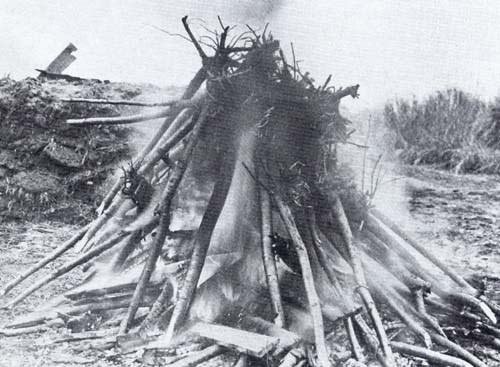
Courtesy of U.S. National Arboretum
January 28, 1910: President William Howard Taft granted his consent to burn the trees.
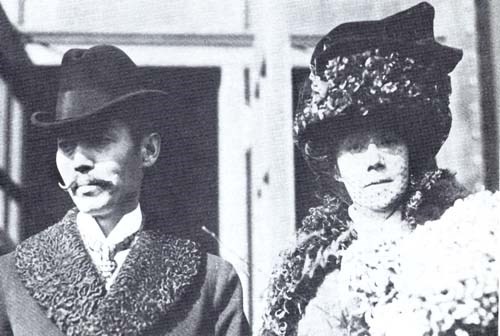
Courtesy U.S. National Arboretum
January 29, 1910: a newspaper article in the Evening Star mentions that "about a dozen" of the "buggiest trees" were saved for further study, and "planted out in the experimental plot of the bureau, and there will be an expert entomologist with a dark lantern, and a butterfly net, cyanide bottle and other lethal weapons placed on guard over the trees, to see what sort of bugs develop."
The Secretary of State sent letters to the Japanese Ambassador expressing the deep regret of all concerned. All parties involved from Japan met the distressing news with determination and good will.
Tokyo Mayor Yukio Ozaki and others suggested a second donation be made, and the Tokyo City Council authorized this plan. The number of trees had now increased to 3,020. The scions for these trees were taken in December 1910 from the famous collection along the bank of the Arakawa River in Adachi Ward, a suburb of Tokyo, and grafted onto specially selected understock produced in Itami City, Hyogo Prefecture.
February 14, 1912: 3,020 cherry trees from twelve varieties were shipped from Yokohama on board the S.S. Awa Maru, bound for Seattle. Upon arrival, they were transferred to insulated freight cars for the shipment to Washington. D.C.
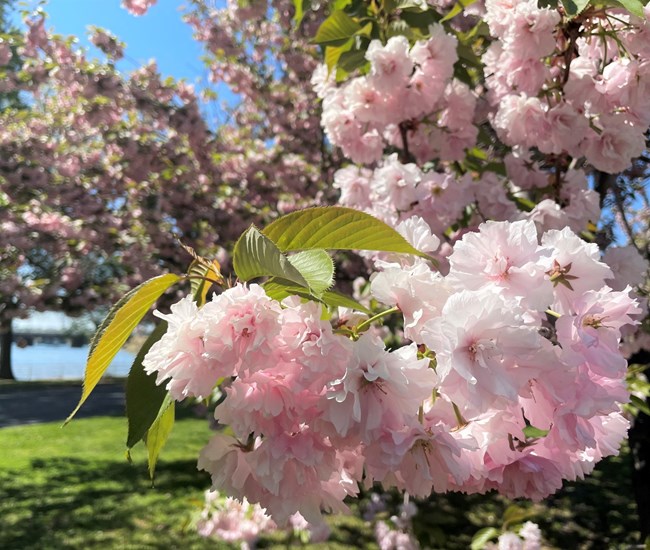
NPS Photo
March 26, 1912: 3,020 cherry trees arrived in Washington, DC. The trees were comprised of the following varieties:
"Somei-Yoshino" ...................................1,800
"Ari ake"....................................................100
"Fugen-zo".................................................120
"Fuku-roku-ju"............................................ 50
"Gyo-i-ko".................................................. 20
(The Gyoiko were all planted on the White House Grounds)
"Ichiyo".....................................................160
"Jonioi".......................................................80
"Kwan-zan"...............................................350
"Mikurumagayeshi"....................................20
"Shira-yuki".............................................. 130
"Surugadainioi"...........................................50
"Takinioi"..................................................140
Total........................................................3,020
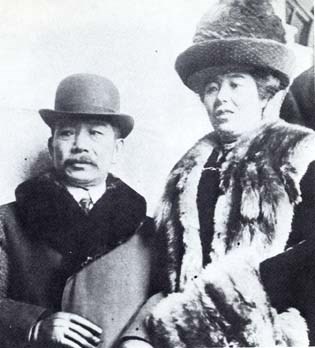
Courtesy U.S. National Arboretum
March 27, 1912: Helen Herron Taft and the Viscountess Chinda, wife of the Japanese Ambassador, planted two Yoshino cherry trees on the northern bank of the Tidal Basin, about 125 feet south of what is now Independence Avenue, SW. At the conclusion of the ceremony, the first lady presented a bouquet of "American Beauty" roses to Viscountess Chinda.
Washington DC's renowned National Cherry Blossom Festival grew from this simple ceremony, witnessed by just a few persons. These two original trees still stand several hundred yards west of the John Paul Jones Memorial, located at the terminus of 17th Street, SW. Situated near the bases of the trees is a large bronze plaque which commemorates the occasion.
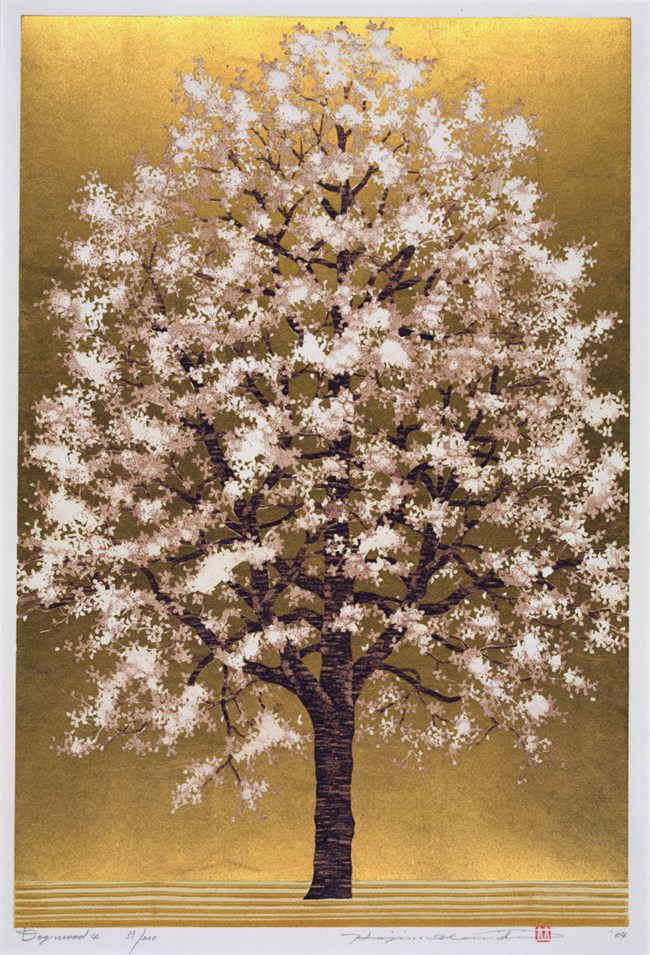
"Dogwood 4," Library of Congress 2006691818, Hajime Namiki 1947 (artist), College of Women's Association of Japan (sponsor)
1913 - 1920: Workers continued planting Yoshino trees around the Tidal Basin. The cherry trees of the other eleven varieties and the remaining Yoshino trees were planted in East Potomac Park.
1915: In a gesture of gratitude for the cherry trees, in 1915 Former President Taft sent a gift of flowering dogwood trees to the people of Japan.
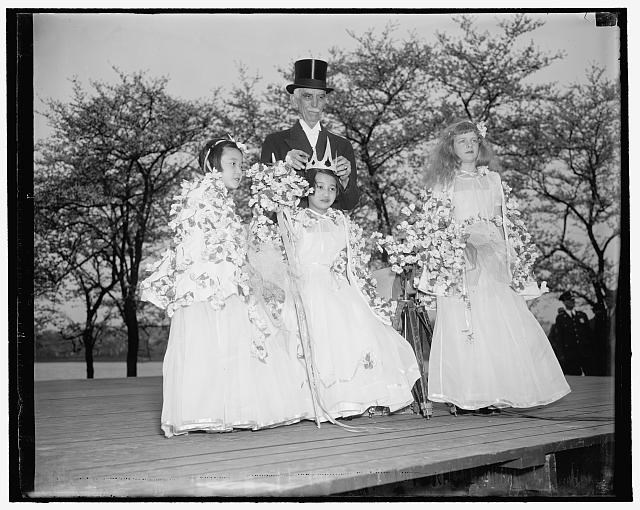
"Crowned Queen of Cherry Blossoms," Library of Congress 2016871505, Harris and Ewing
1927: April 16, the original planting of Japanese cherry trees was commemorated by a re-enactment of the event by Washington school children.
1934: The District of Columbia Commissioners sponsored a three-day celebration.
1935: The first "Cherry Blossom Festival" was sponsored jointly by many civic groups and became an annual event in subsequent years.
April 8, 1937: A ceremony attracted thousands of visitors to the Capital. Sakiko Saito, daughter of the Japanese Ambassador and Mme. Saito, was crowned Queen of the Cherry Blossoms by Melvin Hazen, Commissioner of the District of Columbia. The festival was held to celebrate the anniversary of the presentation of the Japanese cherry trees to the capital by the citizens of Tokio, Japan during the Taft Administration. The Queen was photographed with Masako Saito, also a daughter of the Japanese Ambassador, and Barbara Caldwell, an American playmate.
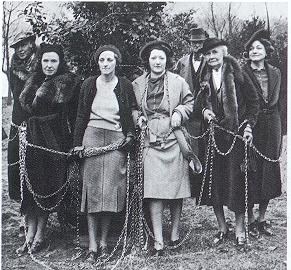
LOC
1938: So prominent were the cherry trees that a group of indignant women chained themselves together near them in a political statement against President Franklin D. Roosevelt. Called the Cherry Tree Rebellion, the sought to stop the workers who were preparing to clear ground for the construction of the Thomas Jefferson Memorial. A compromise was reached wherein more trees would be planted along the south side of the Tidal Basin to frame the memorial.
1940: The Cherry Blossom pageant was introduced to the festival activities
Growing Peace
1948: The Cherry Blossom Festival continued after World War II. Cherry Blossom Princesses were selected from each State of the Union as well as from each federal territory. From these princesses, a queen was chosen to reign during the festival.

Library of Congress
1952: The famed cherry tree grove along the Arakawa River near Tokyo, parent stock for Washington's first trees, had fallen into decline during World War II. Japan requested help to restore the grove in the Adachi Ward.
The National Park Service shipped budwood from descendants of those same trees back to Tokyo. These efforts to help restore the original grove from their descendant trees was part of the cycle of giving and friendship symbolized by the blooming cherry trees.
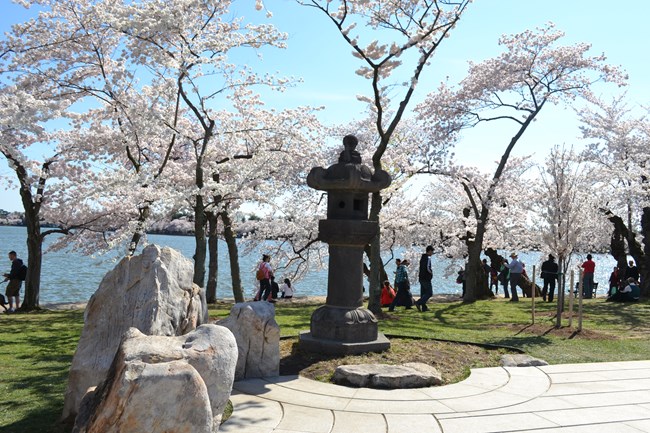
NPS, Brian Hall
March 30, 1954: The Japanese Ambassador to the United States, Sadao Iguchi, presented a 300-year-old Japanese Stone Lantern to the City of Washington. The lantern is one of two; the other stands in Ueno Park in Tokyo, Japan.
The lantern was a gift, a rededication of friendship between nations commemorating the 100th anniversary of the first Treaty of Peace, Amity and Commerce between the United States and Japan signed March 31, 1854 at Yokohama on March 31, 1854.
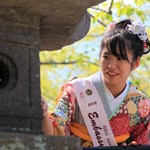
The Japanese Stone Lantern, made of granite, is eight feet high and weighs approximately two tons. The National Cherry Blossom Festival officially is opened by the lighting of the lantern.
1957: Mr. Yositaka Mikimoto, President of Mikimoto Pearls, Inc., donated the Mikimoto Pearl Crown that is used at the coronation of the National Cherry Blossom Festival Queen on the night of the Grand Ball. The crown contains more than two pounds of gold and has 1,585 pearls. This magnificent crown is ceremonial, and because of its weight the young lady, who is crowned Queen, will wear the famous piece for just a few moments. She is given a miniature crown of gold, with a pearl topping each point, to wear for the remainder of the evening and to keep thereafter as her own.
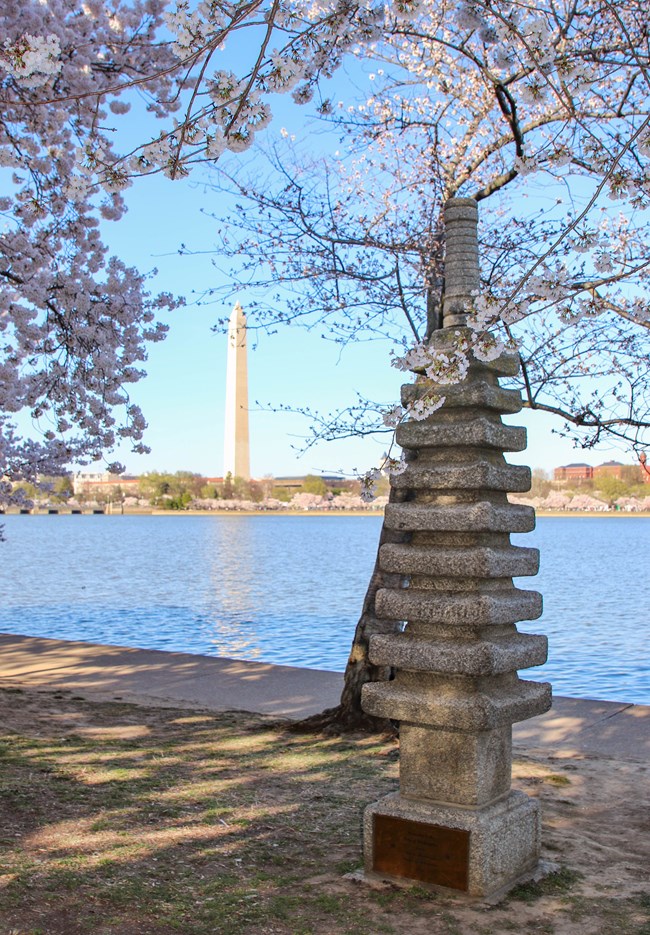
NPS Photo
April 18, 1958: The Japanese Pagoda, hewn out of rough stone, was placed on the southwest bank of the Tidal Basin and dedicated.
It was presented as a gift to the City of Washington DC by the Mayor of Yokohama to "symbolize the spirit of friendship between the United States of America manifested in the Treaty of Peace, Amity and Commerce signed at Yokohama on March 31, 1854..."
The Japanese Pagoda was shipped to the United States in five crates and arrived as a puzzle! It was assembled by specialists from the Smithsonian Institution.
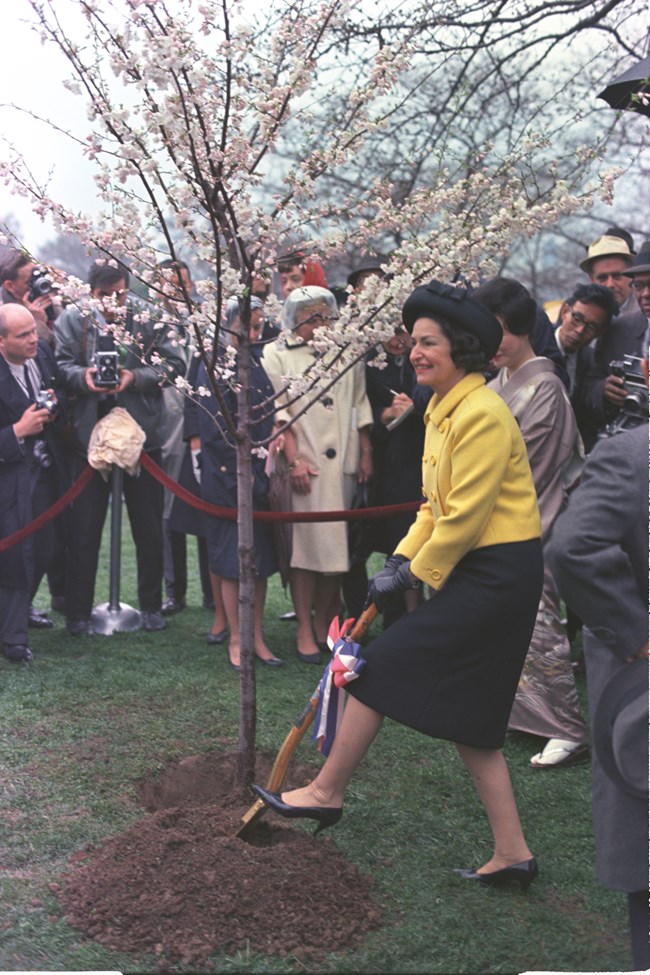
LBJ Library, White House Photo Office collection
1965: The Japanese Government made another generous gift of 3,800 Yoshino trees to another first lady devoted to the beautification of Washington, First Lady Lady Bird Johnson, wife of President Lyndon Baines Johnson.
Many of these trees are planted on the grounds of the Washington Monument. Lady Bird Johnson and Mrs. Ryuji Takeuchi, wife of Japan's Ambassador, reenacted the planting ceremony of 1912.
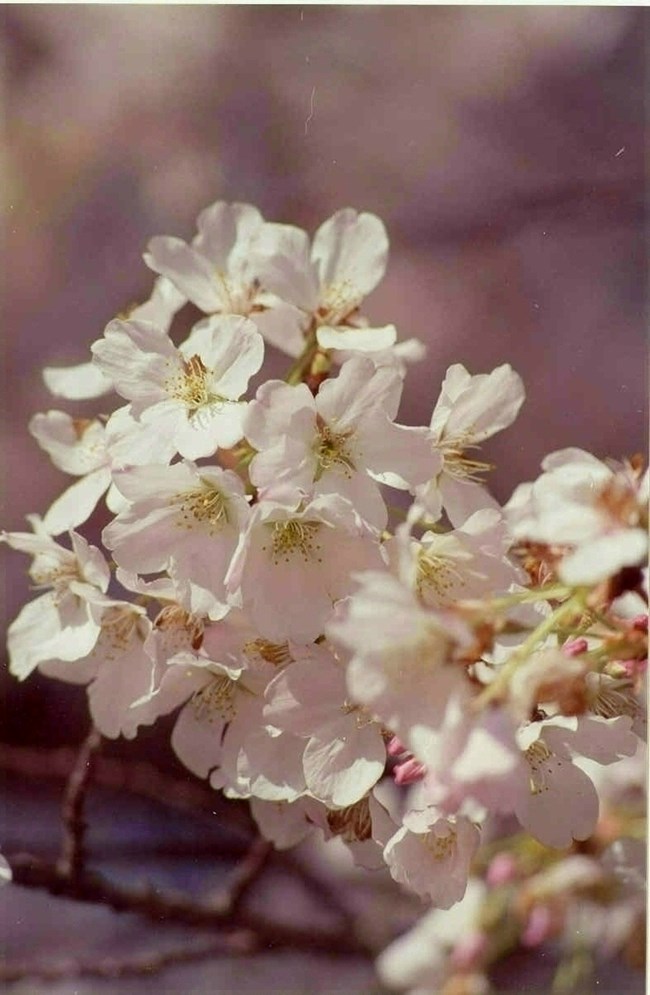
NPS Photo
1982: The cycle of giving and preservation continued. A river rerouting flooded an embankment of Yoshino cherry trees in Japan. Horticulturalists from Japan collected cuttings from the Yoshino cherry trees in Washington DC to help restore the Yoshino grove after the flood.
Approximately eight hundred cuttings from the Tidal Basin Yoshino trees were collected by horticulturists to help retain the characteristics of the grove and replace destroyed trees.
Through this ongoing cycle of restoration and growth, the cherry trees continued to fulfill their role as a symbol and an agent of friendship.
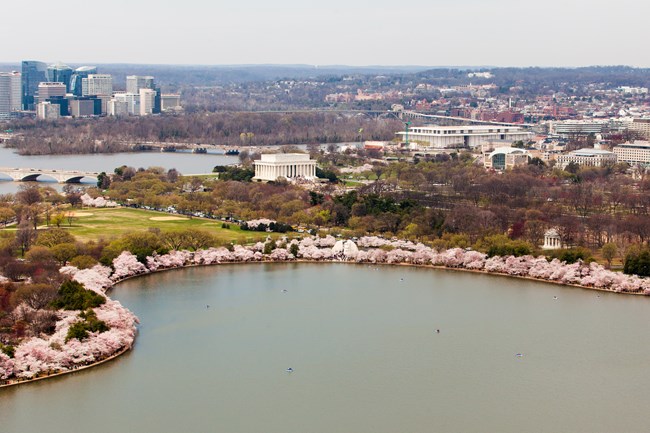
NPS Photo, Rachel Hendrix
1986 to 1988: A total of 676 new cherry trees were planted at a cost of over $101,000 in private funds donated to the National Park Service to restore the number of trees to what they were at the time of the original gift.
1994: The National Cherry Blossom Festival was expanded from one week to two weeks.
1996: March 27, signing of the Sister River Agreement between the Potomac, which flows through Washington DC, and the Arakawa, which originates on scenic Mt. Kobushi in Saitama Prefecture.
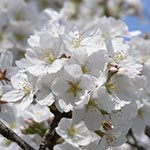
NPS Photo
June 17, 1997: In cooperation with the United States National Arboretum, cuttings were taken from the documented, surviving 1912 Yoshino cherry trees shipment, to ensure preservation of the trees' genetic lineage. These trees will be used in subsequent replacement plantings to preserve the genetic heritage of the grove.
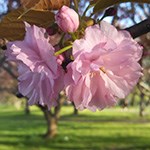
NPS Photo
1999: November 15, Fifty trees, propagated from the 1,400+ year old "Usuzumi" cherry tree growing in the village of Itasho Neo in Gifu Prefecture of Japan, were planted in West Potomac Park. It is said that the 26th Emperor Keitai of Japan planted the tree 1,500 years ago to celebrate his ascension to the throne. The "Usuzumi" tree was declared a National Treasure of Japan in 1922.
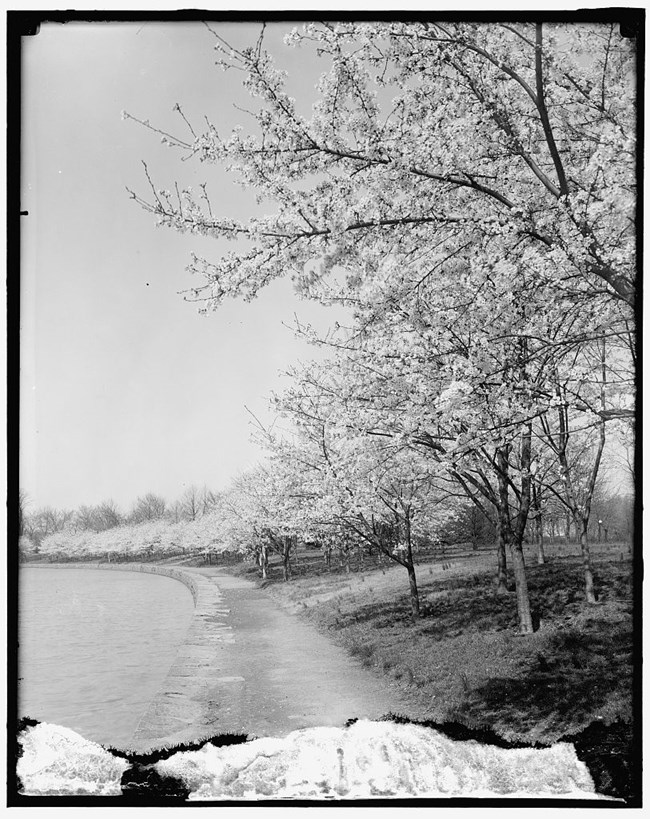
Library of Congress, Harris and Ewing
2002 - 2006: Four hundred trees, propagated from the surviving trees from the 1912 donation, were planted to ensure that the genetic lineage of the original trees is continued.
2011: Approximately 120 propagates from the surviving 1912 trees around the Tidal Basin were collected by National Park Service horticulturists and sent back to Japan to the Japan Cherry Blossom Association to retain the genetic lineage. Through this cycle of giving, the cherry trees continue to fulfill their role as a symbol and as an agent of friendship.
2016: Cuttings were taken from the trees throughout the Tidal Basin and West Potomac Park. These trees are being propagated at a nursery and will be planted in 5-6 years once the trees are large enough to be transplanted.
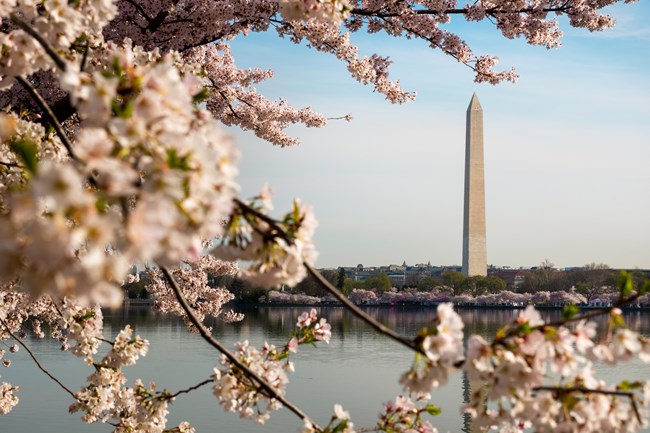
NPS Photo, Rachel Hendrix
This year’s National Chery Blossom Festival continues the spirit and traditions of cultural exchange, international friendship, and taking time to enjoy the blooming of the cherry trees.
Thank you for taking time to learn more about the symbolism and history of the cherry trees.
Enjoy the festival!
Last updated: March 5, 2024
